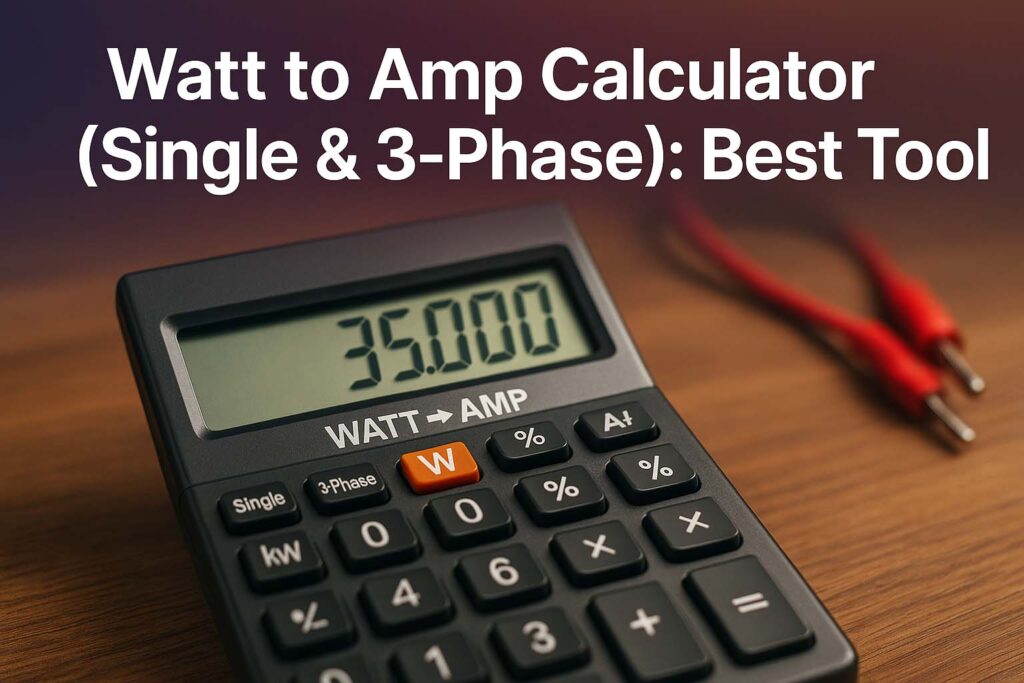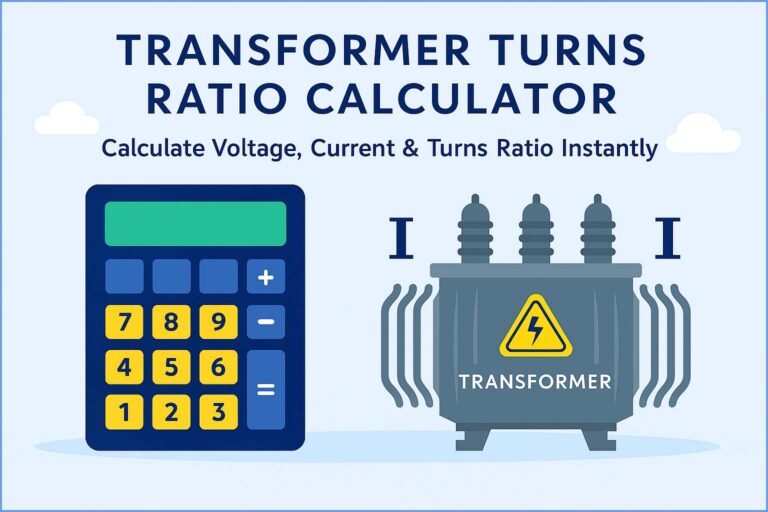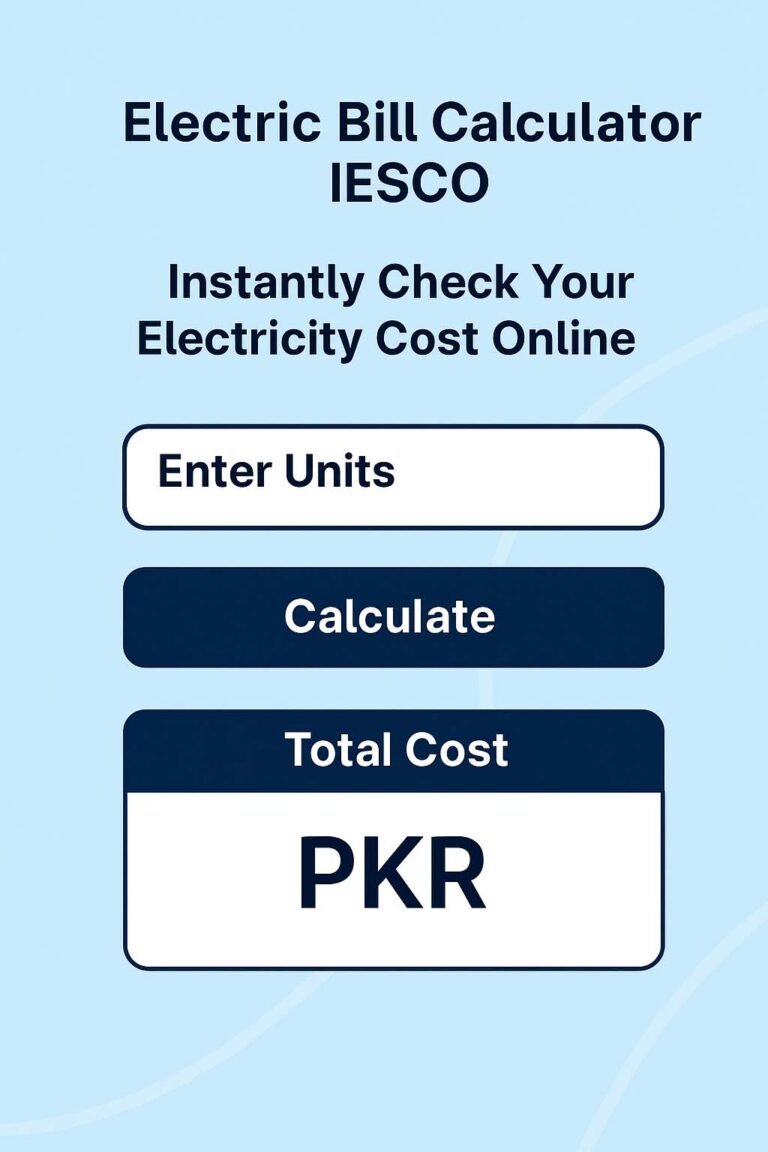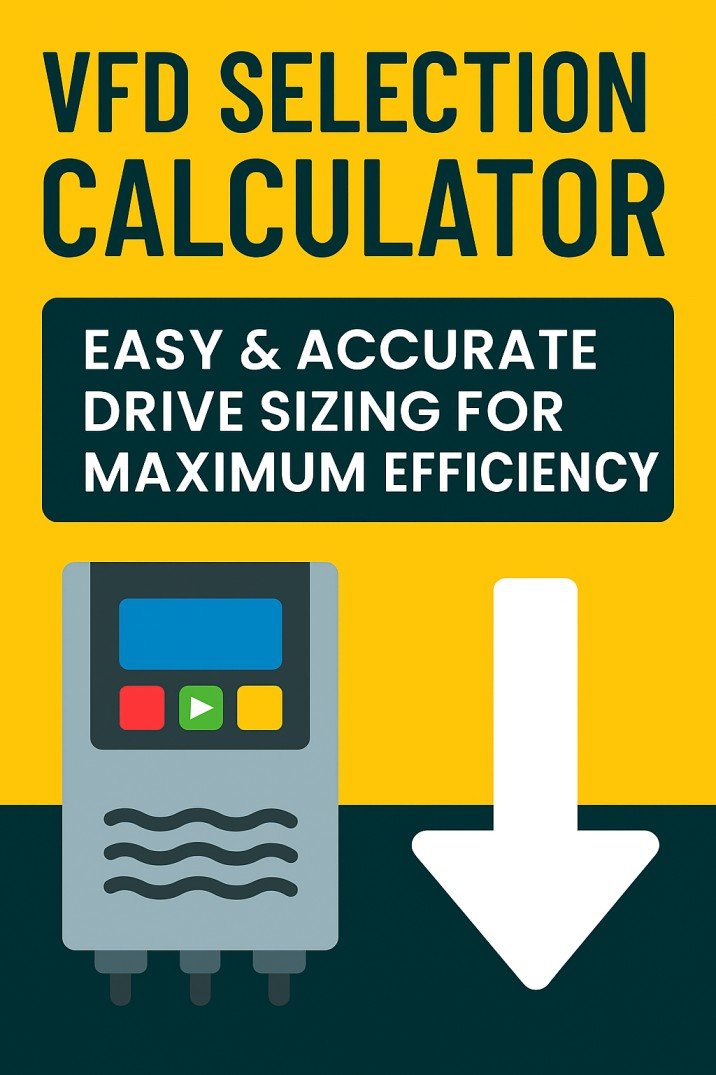Watt to Amp Calculator (Single & Three-Phase): Best Tool
When dealing with electrical systems, understanding the relationship between power and current is essential. Whether you’re wiring a home, setting up industrial equipment, or working on a solar installation, knowing how to convert watts to amps can help ensure your systems are safe and efficient. That’s where a Watt to Amp Calculator becomes a powerful tool. This calculator simplifies the complex math behind current calculations, making it easier for electricians, engineers, and DIYers to make informed decisions.
Table of Contents
Table of Contents

In both single-phase and three-phase systems, converting power to current involves understanding the voltage and power factor. Voltage varies in different countries and applications, and the power factor reflects how efficiently electricity is used. Skipping these factors can lead to incorrect amp calculations, which may result in oversized wires, undersized breakers, or worse—electrical hazards.
This guide will break down the watt to amp conversion formulas for single-phase and three-phase power systems. You’ll also find example tables, technical insights, and a clear explanation of how a current calculator works, helping you convert values accurately and confidently.
Use our online tool for free AWG to mm² Calculator – Convert Wire Sizes Easily and Accurately
Key Takeaways:
- Use the correct formula based on system type: single-phase, three-phase (line-to-line), or three-phase (line-to-neutral).
- Consider the power factor, especially in commercial or industrial setups.
- A Watt to Amp Calculator makes electrical sizing faster, safer, and more accurate.
Understanding the Basics of Watt to Amp Conversion
To convert watts to amps, you need more than just the wattage. Current (in amps) depends on voltage and, in AC systems, the power factor. In simple terms:
Current (Amps) = Power (Watts) ÷ Voltage (Volts)
In AC systems, we also need to include the power factor. Most residential systems have a power factor close to 1, but in industrial setups, it can be as low as 0.8.
Use our online tool for free Electrical Conduit Fill Calculator and Conduit Wire Fill Chart
Let’s break down the formulas based on system type:
- Single-Phase AC: Amps = Watts ÷ (Volts × Power Factor)
- Three-Phase AC (Line-to-Line): Amps = Watts ÷ (√3 × Volts × Power Factor)
- Three-Phase AC (Line-to-Neutral): Amps = Watts ÷ (3 × Volts × Power Factor)
Why Use a Watt to Amp Calculator?
Manual calculations can be prone to error, especially when dealing with large systems or variable power factors. A current calculator automates these formulas, saving time and improving accuracy. It’s especially helpful for:
- Electricians calculating breaker or cable sizes
- Engineers designing control panels
- Solar installers planning inverter capacities
- Generator sizing for backup power
- Industrial maintenance teams performing load analysis
In each of these use cases, a quick watt to amp conversion can determine the correct component ratings, avoiding system failure or over-design.
Use our online tool for free Conduit Fill Calculator (NEC Standard) – Understand Conduit Fill and Wire Capacity
Single-Phase Watt to Amp Conversion Table (Assuming Power Factor = 1)
| Power (Watts) | Voltage (Volts) | Current (Amps) |
|---|---|---|
| 100 | 120 | 0.83 |
| 500 | 120 | 4.17 |
| 1000 | 240 | 4.17 |
| 2000 | 240 | 8.33 |
| 3000 | 240 | 12.5 |
| 5000 | 240 | 20.83 |
This table assumes a purely resistive load (power factor = 1), typical of heaters and incandescent bulbs.
Three-Phase Watt to Amp Conversion Table (Power Factor = 0.85)
| Power (Watts) | Voltage (Line-to-Line) | Current (Amps) |
|---|---|---|
| 3000 | 400 | 5.09 |
| 5000 | 400 | 8.48 |
| 10000 | 400 | 16.96 |
| 20000 | 400 | 33.92 |
| 30000 | 400 | 50.88 |
| 50000 | 400 | 84.81 |
Note: We used the three-phase formula I = P / (√3 × V × PF) with PF = 0.85.
Use our online tool for free House Wiring Cable Size Calculator – Safe and Efficient Sizing for Home Circuits
Technical Insight: Importance of Power Factor in Watt to Amp Calculations
Power factor (PF) is a measure of how effectively electricity is converted into useful work output. A PF of 1 means all power is being effectively used, while a lower PF indicates wasted power. In real-world scenarios, most inductive loads (motors, compressors, HVAC systems) operate at a PF of 0.8–0.9.
Let’s take an example:
You have a 10,000-watt motor running on a 400V three-phase supply with a power factor of 0.85.
Using the formula:
I = 10000 / (√3 × 400 × 0.85) ≈ 17 Amps
If you ignore the power factor, the calculation would be:
I = 10000 / (√3 × 400 × 1) ≈ 14.43 Amps
This underestimates the current, possibly leading to an undersized cable or breaker.
How the Watt to Amp Calculator Works
A Watt to Amp Calculator is built using standard electrical formulas. You input:
- Wattage (W)
- Voltage (V)
- Power Factor (PF, optional but recommended)
- System Type (Single-phase or Three-phase)
The tool then processes the right equation and provides the result instantly.
For example:
- Input: 5000W, 230V, PF 0.9, Single-phase
- Calculation: 5000 ÷ (230 × 0.9) ≈ 24.15A
- Output: 24.15 Amps
Advanced calculators may also support reverse conversion—Amps to Watts, which is just the inverse of the process.
Use our online tool for free Short Circuit Current Calculator for Motors – Accurate Fault Current Calculation Guide
Choosing the Right Voltage for Calculations
Voltage plays a crucial role in the outcome. Common voltages include:
- 120V (US Residential)
- 230V/240V (UK, EU, Asia Residential)
- 400V (EU Three-Phase Industrial)
- 415V (Asia Three-Phase Industrial)
Always ensure you are entering the correct line voltage for your system. For three-phase setups, use line-to-line voltage, unless you are working directly with a line-to-neutral system.
Real-Life Applications of Watt to Amp Conversion
- Home Wiring: A home oven rated at 3000W on 230V would draw around 13A. This helps choose the correct circuit breaker size.
- Generator Sizing: Knowing the amp draw helps size a generator correctly for residential or commercial loads.
- Solar Inverters: If a solar array outputs 5000W, the amp output at 230V must be known for correct inverter and cable selection.
- HVAC Equipment: Motors and compressors often have lower power factors, making exact watt to amp conversion critical.
- Industrial Panels: When assembling panels, accurate current values prevent overheating and unnecessary shutdowns.
Mistakes to Avoid in Watt to Amp Calculations
- Ignoring the power factor (especially in inductive loads)
- Using the wrong voltage value (line-to-line vs line-to-neutral)
- Assuming all devices are resistive (they’re not)
- Applying single-phase formulas to three-phase systems
- Rounding off too early in the calculation
Using a current calculator reduces the chances of these errors and ensures precision.
Frequently Asked Questions (FAQs)
Q: Can I use the same calculator for both AC and DC systems?
Yes, but the formula is simpler for DC:
Amps = Watts ÷ Volts (No power factor involved)
Q: What’s a safe power factor to use if I don’t know the actual one?
Use 0.85 for inductive loads and 1.0 for resistive loads.
Q: How accurate are online Watt to Amp Calculators?
Very accurate, as long as you enter the correct voltage and power factor. They’re based on established electrical engineering formulas.
Q: Why does my calculated current seem too low?
Double-check if you’ve skipped the power factor or used the wrong voltage type.
Q: Is watt to amp conversion necessary for small household devices?
For low-power devices, it’s less critical. But for anything above 1000W or if multiple devices are on the same circuit, it’s essential.
Final Thoughts on Watt to Amp Conversion
A Watt to Amp Calculator is more than just a number-crunching tool. It’s a vital asset in any electrical setup. Whether you’re calculating the safe load on a wire, sizing a generator, or estimating inverter capacity, converting watts to amps accurately is non-negotiable. Always factor in system type, voltage, and power factor to ensure reliability and safety.
Follow Us on Social:
Subscribe our Newsletter on Electrical Insights for latest updates from Electrical Engineering Hub
#watttoamp, #amperagecalculator, #currentcalculator, #electricalcalculators, #singlephase, #threephase, #wattsconversion, #ampsconversion, #wattstoamps, #electricaltools, #loadcalculator, #powercalculation, #electricianschoice, #engineeringtools, #electricalengineering
Watt to Amp Calculator (Single & Three-Phase): Best Tool : Electrical Engineering Hub

Easily convert watts to amps with our Watt to Amp Calculator. Enter your power and voltage to get accurate current values instantly. Perfect for electricians, engineers, and DIY users planning electrical or solar projects
Price Currency: USD
Operating System: All
Application Category: UtilitiesApplication






